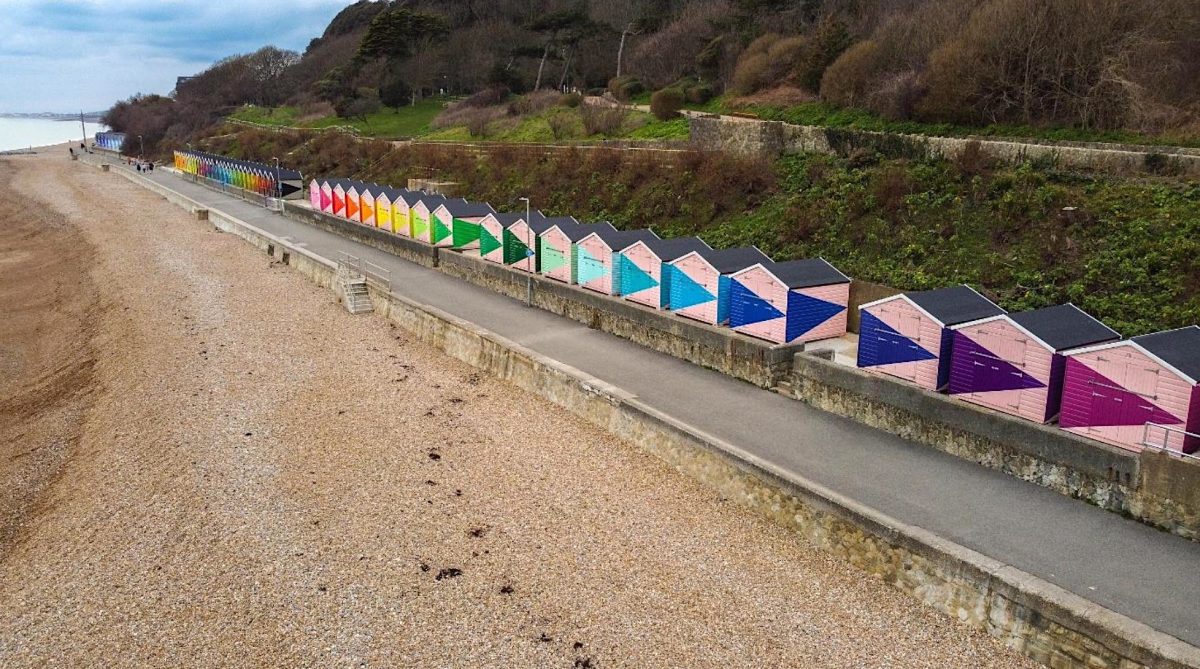Creative Folkestone has announced the new dates for the fifth Folkestone Triennial, The Plot, from 22 July – 2 November 2021. With an extended running time now spanning across the summer, audiences can safely enjoy over 20 outdoor, newly commissioned public artworks in Folkestone’s scenic coastal setting, by artists including Assemble, Rana Begum, Gilbert & George, Atta Kwami, Pilar Quinteros, and Richard Deacon.
The pandemic has highlighted the value of culture in our everyday lives – Alastair Upton
Free to the public, the Triennial marks one of the UK’s most ambitious art exhibitions. Following its run, some works will remain as permanent additions to Creative Folkestone Artworks, which currently features 74 artworks located across the town and harbour and accessible throughout the year. Dedicated to producing and enabling the very best creative activity that has transformed Folkestone and East Kent, and continues to do so, Creative Folkestone’s mission is to make the town a better place to live, work, play and visit.
Alastair Upton, Chief Executive, Creative Folkestone writes: After a year’s delay, and all that has happened in that time, we are delighted to present the return of the Folkestone Triennial this summer. Folkestone’s communities have been so supportive of each other these last twelve months and have shown incredible resilience despite being one of the hardest hit by Covid-19. The pandemic has highlighted the value of culture in our everyday lives, and now we can celebrate our town, reimagined by a brilliant line-up of artists, and show the world what Folkestone is made of. Curated by Lewis Biggs, Folkestone Triennial 2021 The Plot invites visitors to consider urban myths and their relation to verifiable realities: the gap between the story and the materiality. Here, new, site-specific sculptures and installations will be sited along three routes synonymous with historic Folkestone narratives. By borrowing from, or lending to, these stories, the exhibition raises questions around the correlation between tales and the urbanism of the town, calling upon a consideration of ‘place-making.
Lewis Biggs expands: When I started planning this exhibition and inviting wonderful artists to consider sites in the town, I couldn’t have imagined how the coming pandemic would foreground The Plot’s global themes. Ownership of the truth and of scientific method have never been more contested, as different social and economic interests battle to determine the narrative about, and reaction to, Covid-19 and its variants (as well as to the climate emergency, BLM, the US Presidential election, human rights in China etc). Perhaps more surprisingly, lockdowns, travel bans and ‘staycations’ have demonstrated just how important to our well-being is the neighbourhood outside our front doors, leading us to re-evaluate the material quality of our local environment and amenities, the corner shops and parks no less than the broadband, as being ‘vital’ rather than merely ‘desirable’.
Artists featured in Creative Folkestone Triennial 2021 include Assemble, Rana Begum, Sam Belinfante, Stephenie Bergman, Patrick Carillon, Shezad Dawood, Richard Deacon, Jacqueline Donachie, genuine fake, Gilbert & George, Tina Gverović, Mariko Hori, Christopher Houghton Budd, Atta Kwami, Morag Myerscough, Jacqueline Poncelet, Pilar Quinteros, Mike Stubbs, Jason Wilsher-Mills, Winter / Hörbelt, and HoyCheong Wong & Simon Davenport & Shahid Saleem / Makespace.
Reflecting on the town that hosts them, many of the Triennial artworks have been created with, or inspired by, Folkestone’s local communities. The notion of place as a transitory state of evolving change and renewal is revealed in works such as Jacqueline Donachie’s Beautiful Sunday, a vast dance floor and film celebrating the night-time revellers of Folkestone, honouring the social club which was once located on the site. Nearby, Turner Prize-winning multi-disciplinary collective Assemble have collaborated with local skateboarders to create a series of interactive sculptures, Skating Situations, to be used by the community. Meanwhile, Rana Begum has transformed the beach huts which line more than a kilometre of promenade with an entirely new colour scheme, using compositions that play with geometry, colour and light – one of the largest and most joyful artworks in the country.
In addition, and for the first time, Creative Folkestone will bring the Triennial online through virtual tours and video content. Committed to championing the creative community, the Triennial highlights the strength and resilience of the creative industries, underlining how contemporary art can shape and enrich the public realm for both local communities and visitors alike.
Creative Folkestone Triennial is one of the most ambitious exhibitions of contemporary art outside the gallery context presented in the UK. The seaside town of Folkestone on the south-east coast of England has no publicly subsidised art gallery, so artists are invited to use the town as their ‘canvas’, utilising public spaces to create striking new art that reflects issues affecting both the town and the wider world. Inaugurated in 2008, the Triennial takes place every three years and is one of the 5 key projects of Creative Folkestone. Artists commissioned to take part in previous Triennials include Lubaina Himid, Bob and Roberta Smith, Cornelia Parker, Tracey Emin, Jeremy Deller, Martin Creed, Richard Wilson, Yoko Ono, Pablo Bronstein, Andy Goldsworthy and Michael Sailstorfer. The Triennial was visited by 135,000 people in 2014, and this increased to 150,000 people in 2017. For the 2014 edition, the Triennial began a significant public programme which included some 18,000 learners, over 70 schools and 50 community groups; in 2017, this comprehensive programme was developed to 202 talks, tours, workshops, conferences through a schools and community programme as well as a Further and Higher Education programme.
Top Photo: Rana Begum, No.1054 Arpeggio, commissioned for Creative Folkestone Triennial 2021 in partnership with Folkestone and Hythe District Council.
Read More

